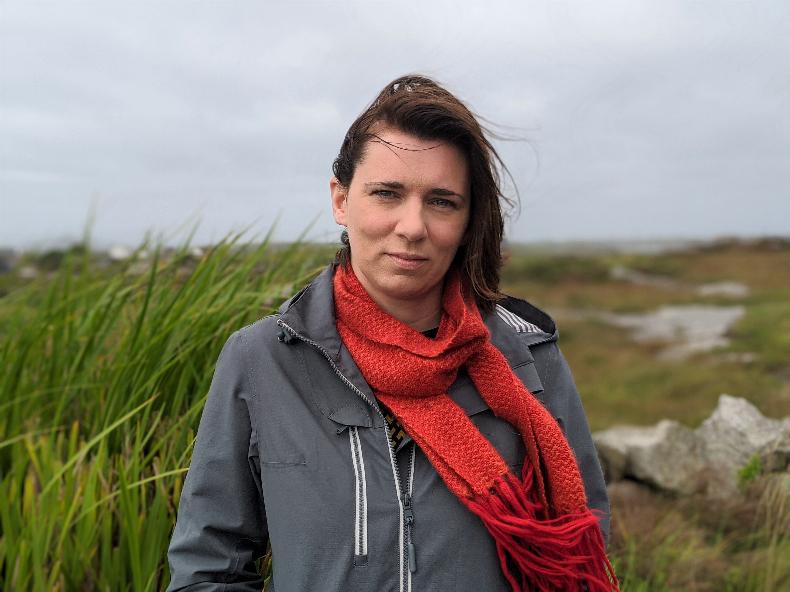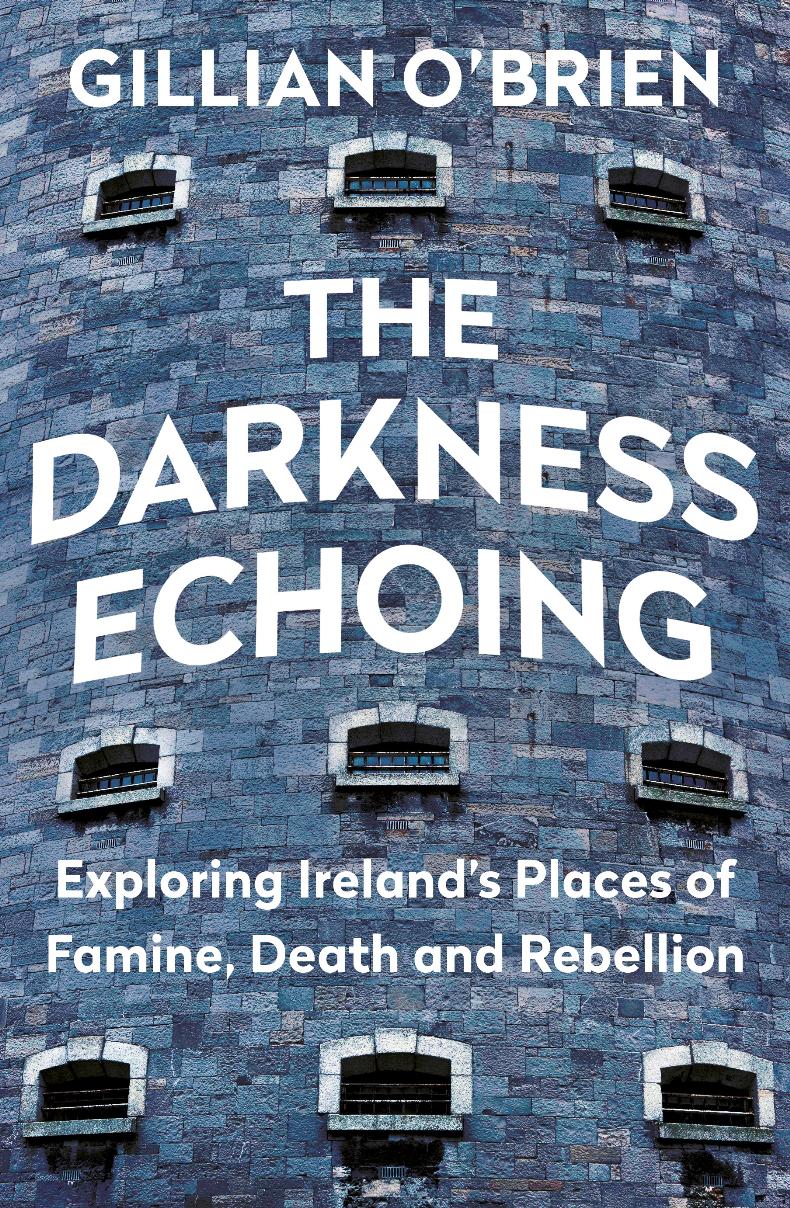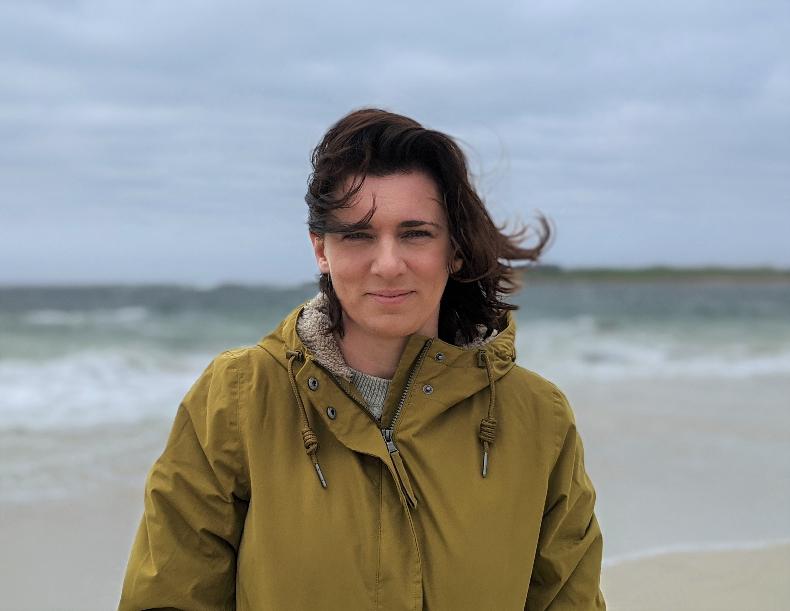My grandmother always said she’d make a handsome corpse. And when I saw her laid out on the bed, her hands neatly folded on her stomach, rosary beads entwined in her fingers, her soft leather shoes pointing to the ceiling, I knew she had been right. She was wearing the dress she’d had made for her son’s wedding: an elaborate, full-skirted creation in russet, gold and black on which abstract geometric patterns competed with swirling floral `motifs– it looked like a painting by Gustav Klimt. Her eyes were closed. The lamp on the bedside table threw an eerie glow across her pale face. I stood in the doorway, stunned.
My grandmother opened one eye. “Well?” she said. “What do you think?”
Two nights earlier, over tea in front of the open fire, my grandmother had outlined her plans for her funeral. This was not the first time. I knew her choice of undertaker, how she wanted to be waked and what prayers she had chosen for her memorial card. On this occasion she wanted to discuss her “rig- out”. Her plan, she told me, was to be laid out in the Klimt dress.
“But Nana,” I said, “it’s 20 years old.”

Gillian O'Brien has spent many years researching the murkier corners of Irish history. \ Alistair Daniel
Nana did not see the problem.
“Besides,” I added, “you’re a much smaller woman now.”
Nana waved a hand. “Yerra, it’ll be fine. Shure Kirwan’s will sort all that out.”
Two days later I arrived home from college to find her resplendently, if temporarily, “dead”.
“Take a photo,” she demanded. “I want to see how I look.”
Conversations with Nana about death were as ordinary as conversations about the weather. If you asked her how she was, she would invariably answer, “Dying away,” a process that – though she was in perfect health – seemed to overshadow the last 40 years of her life. And if it wasn’t her own death, it was other people’s. One day, when she returned from one of the innumerable funerals she attended, I asked her if her friend Mrs Burke had been there too. She replied, “Arra, she was, barely. That woman would be dead years if she’d the sense to stiffen.”
As a nation, the Irish are obsessed with suffering and death. Where else would a website that publishes death notices get five million hits a month? Where else would a marriage proposal begin with, “Do you want to be buried with my people?” or popular ballads extol the attractions of martyrdom?
It took a move to Liverpool, marriage to an Englishman and attendance at some English funerals to make me fully aware that the Irish fascination with the dark side of a story was not shared across the globe. In England, death is unmentionable. I remember being horrified when Al, my husband, told me that when his mother died not one of his friends went to her funeral and when he returned to university everyone behaved as if nothing had happened. I’m still surprised by the formality of an English funeral, and after I’d been to a few I announced to Al that if I died in England his first action was to ensure that I was repatriated to Ireland to be waked in traditional Irish style.

The Darkness Echoing by Gillian O’Brien is published by Doubleday Ireland and out now. Trade paperback €16.
As a historian, I’ve spent many years researching the murkier corners of Irish history. I’ve written a book about the gruesome murder of an Irish republican in 19th century Chicago and I’ve worked as the historical consultant for a number of heritage projects – former prisons, courthouses and forts, places where stories of murder, conflict and incarceration abound. Working on these places stimulated my interest in what is called “dark tourism” – travel to places associated with suffering or death. And so I decided to set out on my own bespoke tour of Ireland – a tour my grandmother would revel in, a tour of Ireland in the shadows. The Darkness Echoing is much more than a guide to Irish museums and heritage sites. It’s a personal exploration of what stories are told and why. I’m particularly interested in the lesser-told tales, those that are overlooked and often sidelined while the same old stories take centre stage time and time again.
I never did take a photo of my grandmother laid out in her 70s’ finery. I had no camera with me that day, and when she did die, some 15 years later, in her 98th year, she was dressed – to my relief – in the fine woollen suit and pink silk blouse she’d bought for her 90th birthday.
Still, I don’t need a photograph to remind me of that moment. I can see it in my mind’s eye. But unless I put the story down on paper, or retell it to friends, it will eventually be lost. That, of course, is true of history itself. Some of it is written down, some of it survives through objects, some in bricks and mortar – but so much of it simply evaporates into thin air. Or, like ourselves, is buried or burned. What’s left behind is all we know.
Read more
‘My laptop is having a meltdown’
No need to panic: Irish Country Living's top quarantine reads
My grandmother always said she’d make a handsome corpse. And when I saw her laid out on the bed, her hands neatly folded on her stomach, rosary beads entwined in her fingers, her soft leather shoes pointing to the ceiling, I knew she had been right. She was wearing the dress she’d had made for her son’s wedding: an elaborate, full-skirted creation in russet, gold and black on which abstract geometric patterns competed with swirling floral `motifs– it looked like a painting by Gustav Klimt. Her eyes were closed. The lamp on the bedside table threw an eerie glow across her pale face. I stood in the doorway, stunned.
My grandmother opened one eye. “Well?” she said. “What do you think?”
Two nights earlier, over tea in front of the open fire, my grandmother had outlined her plans for her funeral. This was not the first time. I knew her choice of undertaker, how she wanted to be waked and what prayers she had chosen for her memorial card. On this occasion she wanted to discuss her “rig- out”. Her plan, she told me, was to be laid out in the Klimt dress.
“But Nana,” I said, “it’s 20 years old.”

Gillian O'Brien has spent many years researching the murkier corners of Irish history. \ Alistair Daniel
Nana did not see the problem.
“Besides,” I added, “you’re a much smaller woman now.”
Nana waved a hand. “Yerra, it’ll be fine. Shure Kirwan’s will sort all that out.”
Two days later I arrived home from college to find her resplendently, if temporarily, “dead”.
“Take a photo,” she demanded. “I want to see how I look.”
Conversations with Nana about death were as ordinary as conversations about the weather. If you asked her how she was, she would invariably answer, “Dying away,” a process that – though she was in perfect health – seemed to overshadow the last 40 years of her life. And if it wasn’t her own death, it was other people’s. One day, when she returned from one of the innumerable funerals she attended, I asked her if her friend Mrs Burke had been there too. She replied, “Arra, she was, barely. That woman would be dead years if she’d the sense to stiffen.”
As a nation, the Irish are obsessed with suffering and death. Where else would a website that publishes death notices get five million hits a month? Where else would a marriage proposal begin with, “Do you want to be buried with my people?” or popular ballads extol the attractions of martyrdom?
It took a move to Liverpool, marriage to an Englishman and attendance at some English funerals to make me fully aware that the Irish fascination with the dark side of a story was not shared across the globe. In England, death is unmentionable. I remember being horrified when Al, my husband, told me that when his mother died not one of his friends went to her funeral and when he returned to university everyone behaved as if nothing had happened. I’m still surprised by the formality of an English funeral, and after I’d been to a few I announced to Al that if I died in England his first action was to ensure that I was repatriated to Ireland to be waked in traditional Irish style.

The Darkness Echoing by Gillian O’Brien is published by Doubleday Ireland and out now. Trade paperback €16.
As a historian, I’ve spent many years researching the murkier corners of Irish history. I’ve written a book about the gruesome murder of an Irish republican in 19th century Chicago and I’ve worked as the historical consultant for a number of heritage projects – former prisons, courthouses and forts, places where stories of murder, conflict and incarceration abound. Working on these places stimulated my interest in what is called “dark tourism” – travel to places associated with suffering or death. And so I decided to set out on my own bespoke tour of Ireland – a tour my grandmother would revel in, a tour of Ireland in the shadows. The Darkness Echoing is much more than a guide to Irish museums and heritage sites. It’s a personal exploration of what stories are told and why. I’m particularly interested in the lesser-told tales, those that are overlooked and often sidelined while the same old stories take centre stage time and time again.
I never did take a photo of my grandmother laid out in her 70s’ finery. I had no camera with me that day, and when she did die, some 15 years later, in her 98th year, she was dressed – to my relief – in the fine woollen suit and pink silk blouse she’d bought for her 90th birthday.
Still, I don’t need a photograph to remind me of that moment. I can see it in my mind’s eye. But unless I put the story down on paper, or retell it to friends, it will eventually be lost. That, of course, is true of history itself. Some of it is written down, some of it survives through objects, some in bricks and mortar – but so much of it simply evaporates into thin air. Or, like ourselves, is buried or burned. What’s left behind is all we know.
Read more
‘My laptop is having a meltdown’
No need to panic: Irish Country Living's top quarantine reads








 This is a subscriber-only article
This is a subscriber-only article









SHARING OPTIONS: